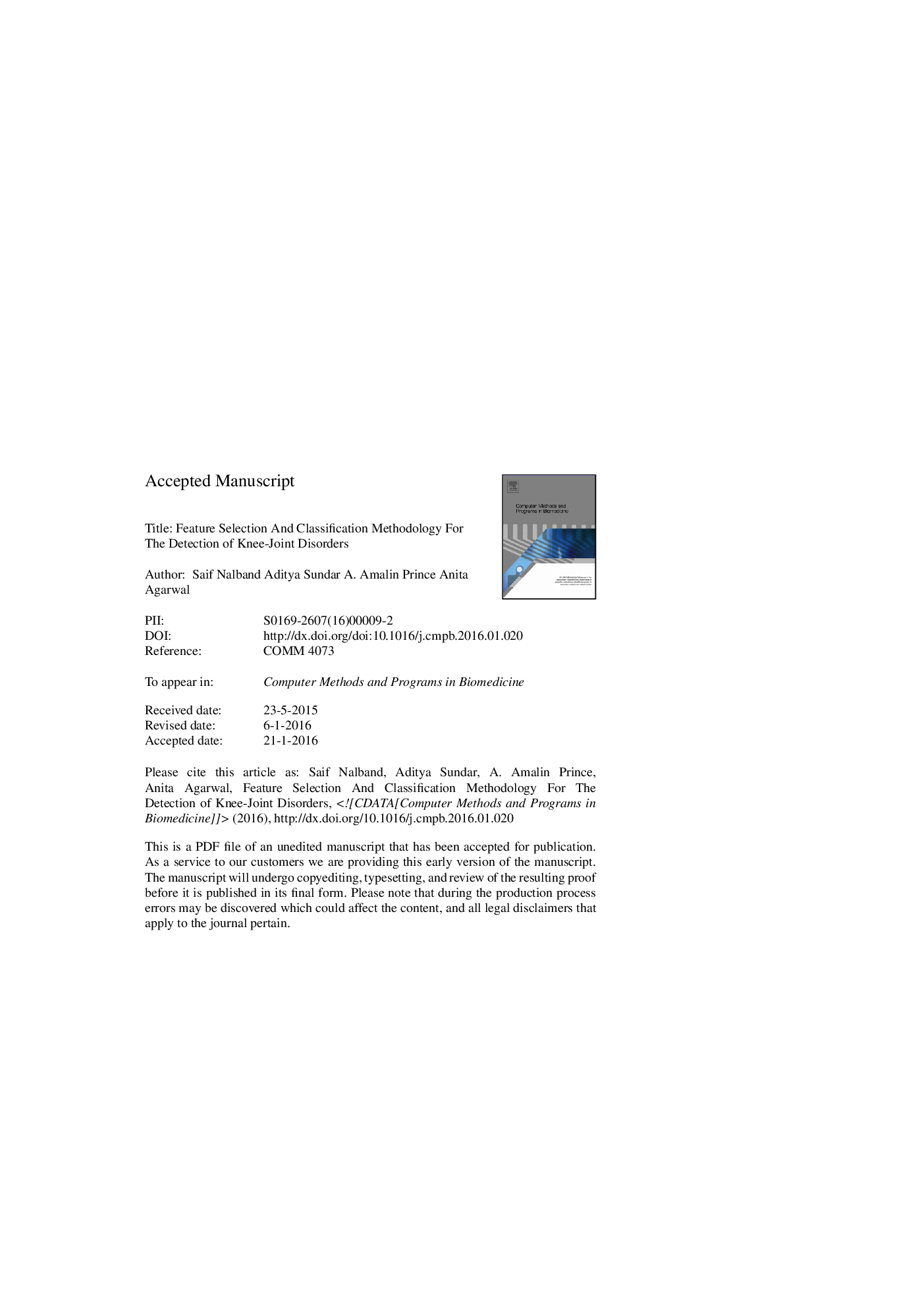| Article ID | Journal | Published Year | Pages | File Type |
|---|---|---|---|---|
| 6891434 | Computer Methods and Programs in Biomedicine | 2016 | 21 Pages |
Abstract
Vibroarthographic (VAG) signals emitted from the knee joint disorder provides an early diagnostic tool. The nonstationary and nonlinear nature of VAG signal makes an important aspect for feature extraction. In this work, we investigate VAG signals by proposing a wavelet based decomposition. The VAG signals are decomposed into sub-band signals of different frequencies. Nonlinear features such as recurrence quantification analysis (RQA), approximate entropy (ApEn) and sample entropy (SampEn) are extracted as features of VAG signal. A total of twenty-four features form a vector to characterize a VAG signal. Two feature selection (FS) techniques, apriori algorithm and genetic algorithm (GA) selects six and four features as the most significant features. Least square support vector machines (LS-SVM) and random forest are proposed as classifiers to evaluate the performance of FS techniques. Results indicate that the classification accuracy was more prominent with features selected from FS algorithms. Results convey that LS-SVM using the apriori algorithm gives the highest accuracy of 94.31% with false discovery rate (FDR) of 0.0892. The proposed work also provided better classification accuracy than those reported in the previous studies which gave an accuracy of 88%. This work can enhance the performance of existing technology for accurately distinguishing normal and abnormal VAG signals. And the proposed methodology could provide an effective non-invasive diagnostic tool for knee joint disorders.
Related Topics
Physical Sciences and Engineering
Computer Science
Computer Science (General)
Authors
Saif Nalband, Aditya Sundar, A. Amalin Prince, Anita Agarwal,
